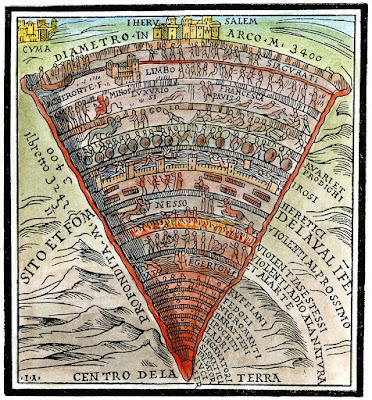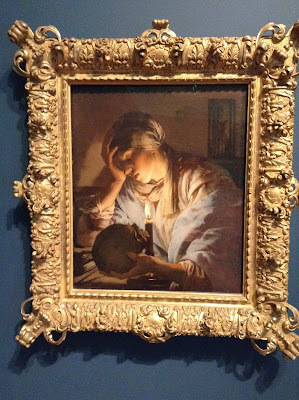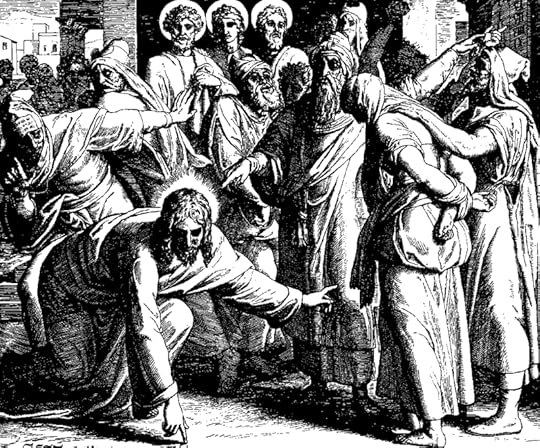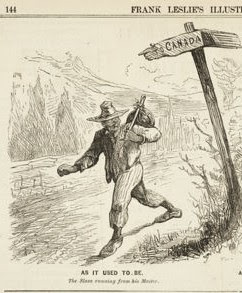Stephen Roney's Blog, page 190
August 6, 2021
Pallister's Partial Apostasy
 Brian Pallister; Globe & Mail
Brian Pallister; Globe & MailThere are continuing calls for Manitoba Premier Brian Pallister to resign for saying, on Canada Day, “The people who came here to this country before it was a country, and since, didn't come here to destroy anything. They came here to build.”
“Those remarks,” the CBC explains, “were quickly characterized by scholars as ahistorical and insensitive.”
Pallister has since apologized. His indigenous affairs minister has resigned, saying “Inappropriate words and actions can be very damaging.” The chosen replacement, himself Metis, almost immediately had to apologize for saying the Indian residential schools were started with good intentions.
Pallister’s comments were not just inoffensive, but conciliatory. He was spreading oil on troubled waters, after a destructive riot on Canada Day, as a leader should. They were also obviously true. Why, after all, would anyone cross an ocean, or cross a country, just to destroy something?
Why the dramatic attack? The modern elite demands extreme ideological conformity, and conformity to statements and concepts that are obviously untrue, precisely because they feel endangered. They have to be sure they can trust anyone in a position of power to protect their joint position. They need this sort of public oath of loyalty.
They are unlikely, over time, to keep getting it; they keep raising the ante. At this point, if people start talking openly about the matter of the residential schools and Canada’s history of indigenous relations, their prior claims of genocide will fall apart. If people start talking openly about human sexuality, their claims about gender will fall apart. At that point, the entire elite gets discredited, and falls.
If they have not by this point, they are inevitably going to overplay their hand. They are in too deep. There is a house of cards here, and the remarkable thing is that it has not collapsed already.
Perhaps we are seeing the beginning of the end in the school board meetings in the US, in which many parents are challenging critical race theory in the schools.
I guess this can go a few different ways: a forward march into totalitarianism to preserve the privilege of the elites; a revolution, in which they are swept out for a more democratic society in the tradition of the French or American revolutions; or first the one, some dreadful holocaust, and then the other.
'Od's Blog: Catholic comments on the passing parade.
August 5, 2021
The Devil is a Conformist

Most people seem to equate morality with going along with the crowd; and even see departing from the herd as somehow immoral. This means, unfortunately, that most people are going to hell.
Enter through the narrow gate. For wide is the gate and broad is the road that leads to destruction, and many enter through it. But small is the gate and narrow the road that leads to life, and only a few find it. (Matthew 7: 13-4)
I was recently teaching a grad student how to avoid the dreaded “death by Powerpoint,” warning her not to put text on her slides that simply repeated points in her presentation, but to use the slides for illustration and example. After a full lesson on this, she came back saying with some agitation that she has seen the other presentations, and they all used bullet points. So she was going to go with bullet points.
The very fact that all the other presentations were using bullet points was actually an additional strong argument not to use them. All the more boring. But she simply could not seem to grasp the concept that the majority could be doing it wrong.
The essence of genius, or of true morality, is to realize that the majority is doing it wrong. No human progress can be made without this starting assumption; and no moral choice. For if you simply go along with the crowd, you are avoiding making moral choices.
The more the majority is aware of doing wrong, the more they will insist on conformity and uniformity; the more they will condemn “individualism,” and grow tribal or clannish. The herd instinct is their best protection against conscience and taking responsibility for wrongs. “Everyone is doing it!” “I was only following orders!”
We see this in our current downward spiral into “cancel culture.”
In just this way, the sexual libertinage of Weimar Germany led to the radical conformity of Nazism.
It looks as though history is repeating itself.
August 4, 2021
Cuomo Is Just One More
 USA Today
USA TodayThe Andrew Cuomo scandal seems another example of high-level Democratic politicians often being reprehensible people. And they seem able to rise high in the party without anyone noticing or, perhaps, caring. This in turn reinforces my growing impression that politics has become of late a moral choice: one cannot be a good person and attain and stay in leadership on the left.
Michael Avenatti was widely touted as a presidential possibility, as was Andrew Cuomo as of a year ago. John Edwards came close. Elizabeth Warren faked her ethnicity to get ahead. Bill Clinton was a serial philanderer, if not a rapist. Ted Kennedy seems to have been responsible for a girl’s death. It looks as though Joe Biden is in the pay of China and others; his son certainly is.
Really, are these the good guys?
When a Democrat who looks like a good, sincere human being comes along, they seem to be rejected by the party brass: Tulsi Gabbard, Andrew Yang, Mike Gravel.
Sure, there are scandals on the Republican side too. But far fewer. There, it seems to be an individual matter, and good men and women can rise to the top: a John McCain, a Mitt Romney, a Rick Santorum, a Ben Carson.
I do not think it was always this way. I think this is another of the consequences of unrestricted abortion. Everyone knows in their conscience that it is wrong. A political party that supports it is in flight from morality.'Od's Blog: Catholic comments on the passing parade.
The Levels of Hell
 Dante's inferno.
Dante's inferno.The traditional view of Hell is as a place of many torments. Dante imagined it as having levels, with the punishments growing more severe to fit the crime.
Yet Catholic doctrine seems to make hell an up or down thing. There is really only one sin that sends you to hell. That is a willful turning away from God. This seems to imply that one punishment fits all, and that punishment is eternal separation from God.
However—justice seems to demand that, on top of this, there must be just retribution for harm caused to others. And the story of the rich man and Lazarus speaks of undying thirst, and of fire.
The damned may eternally crave, like Tantalus in the Greek underworld. They crave because this is their nature: always seeking to satisfy their urges in life, they come to exist only as an enormous appetite thatcan never be satisfied. This is the essence of what we now call narcissism, and which the Greeks called hubris: a desire to possess or devour everything. This is an appetite that can never, in principle, be satisfied, and so it endures eternally. Buddhism, too, speaks of “hungry ghosts,” and sees the necessity of ending all cravings.
Heaven and God, by contrast, is living water, living bread, which if eaten once one can never hunger or thirst again.
As for the image of fire: perhaps this is the fire of desire, an automatic metaphor. The wicked cannot rest.
Isaiah 57:
Those who walk uprightly enter into peace; they find rest as they lie in death. But you--come here, you sons of a sorceress, you offspring of adulterers and prostitutes!
… You burn with lust among the oaks and under every spreading tree; you sacrifice your children in the ravines and under the overhanging crags.
… But the wicked are like the tossing sea, which cannot rest, whose waves cast up mire and mud.
'Od's Blog: Catholic comments on the passing parade.
August 3, 2021
ter Brugghen's Melancholy
'

This early 17th century Dutch painting by Henrick ter Brugghen, found in the Art Gallery of Ontario, is titled “Melancholy”―what used to be the term for what we now call “depression.”
According to a contemporary source, ter Brugghen himself suffered severely from depression. This painting seems to give his view of the matter.
The young woman contemplating the skull is Mary Magdalene. Tradition suggests she had been a prostitute; more definitely, that she was wealthy. Here, she is reflecting on the vanity of life. What, in the face of death, is the point of it all?
But surely the message is hopeful. Mary Magdalene discovered the point of it all. She met Jesus; he cast seven devils out of her. She became a devout disciple, and was the first to witness the empty tomb and the resurrection.
This suggests that, rather than being an illness, depression is the first step on a path to insight. The depressed recognizes the folly and wrongness of this world; she is now prepared to embrace the next.
August 2, 2021
The Woman Taken in Adultery

Two claims about Christianity that really disgust me are, first, the “happy happy joy joy” notion that Christians are supposed to find life always happy; an absurd and offensive thought to hold in the very shadow of Jesus pinioned on the cross. Second, the notion that Christians are not to judge―endlessly used as a get out of jail free card by non-Christians wanting to get away with bad actions.
I think I have dealt with both here before.
For the second heresy, one passage often cited is the “judge not, lest ye be judged” verse in Matthew.
Matthew 7:1-5—in context.
“Do not judge, or you too will be judged. 2 For in the same way you judge others, you will be judged, and with the measure you use, it will be measured to you.
3 “Why do you look at the speck of sawdust in your brother’s eye and pay no attention to the plank in your own eye? 4 How can you say to your brother, ‘Let me take the speck out of your eye,’ when all the time there is a plank in your own eye? 5 You hypocrite, first take the plank out of your own eye, and then you will see clearly to remove the speck from your brother’s eye.”
It actually ends with judgement; with you judging your brother. You are indeed to judge; but not judge by any standard you are not ready to apply to yourself. It is a warning against hypocrisy, not judgement.
A second Biblical passage often cited is that in John of the woman taken in adultery.
2 At dawn he appeared again in the temple courts, where all the people gathered around him, and he sat down to teach them. 3 The teachers of the law and the Pharisees brought in a woman caught in adultery. They made her stand before the group 4 and said to Jesus, “Teacher, this woman was caught in the act of adultery. 5 In the Law Moses commanded us to stone such women. Now what do you say?” 6 They were using this question as a trap, in order to have a basis for accusing him.
But Jesus bent down and started to write on the ground with his finger. 7 When they kept on questioning him, he straightened up and said to them, “Let any one of you who is without sin be the first to throw a stone at her.” 8 Again he stooped down and wrote on the ground.
9 At this, those who heard began to go away one at a time, the older ones first, until only Jesus was left, with the woman still standing there. 10 Jesus straightened up and asked her, “Woman, where are they? Has no one condemned you?”
11 “No one, sir,” she said.
“Then neither do I condemn you,” Jesus declared. “Go now and leave your life of sin.”
--John 7:53-8:11
Biblical scholars argue that this is a late insertion, not found in the earliest Greek texts. As a Catholic, I do not care. The Church obviously did find it significant, to insert it.
But Jesus does judge the woman—he says she has sinned. Nor does he say she should not be stoned.
When the Pharisees there to stone her fade away, she remains standing. She could have taken to her heels. Jesus is not looking, giving her this opportunity. He is deliberately looking down at the ground. She has, by this, expressed repentance for her sin, and has acknowledged that she deserves punishment.
Under these conditions, we can and should forgive. And if we do, we can expect the same forgiveness from God.
If, on the other hand, we take to our heels, deny that we have done wrong, deny the justice of our condemnation, we are damned.
And it is the fraternal duty of the Christian to point out to us our wrong. Unless, that is, he wants to see us in hell.
Blessed are those who hunger and thirst after righteousness.
'Od's Blog: Catholic comments on the passing parade.
The Delta Variant Hits the Philippines
Not seeing anything about it in the international news, but my wife, who is on the ground, is reporting a dangerous surge in hospitalizations due to COVID in and around Cebu in the Philippines. These photos are taken outside two local hospitals within the past two days.
She is thankfully fully vaccinated. But she has stocked up on food, fearing a general lockdown or a collapse of supply chains. The vaccination rate in the Philippines is still quite low.







'Od's Blog: Catholic comments on the passing parade.
August 1, 2021
Happy Canadian Emancipation Day

Today is the first occurrence of a newly-minted Canadian holiday, “Emancipation Day,” meant to commemorate the emancipation of black slaves in Canada in 1834.
It is worth noting that probably no Canadian slaves were actually emancipated in 18334; for the inconvenient reason that there were no slaves in Canada at that time.
There has been slavery in Canada—as there has been slavery in every society known to man. But it played a much smaller role in Canadian history than that of most places. Canada is more prominent as a refuge for those escaping slavery elsewhere.
Upper Canada—Ontario—banned the importation of slaves in 1793. It has the distinction of being the first jurisdiction in the British Empire to do so. If you made it to Ontario, you were free.
In New France slavery was never recognized by legislation, but the intendant Raudot issued an ordinance in 1709 that legalized it: “All Panis and Negroes who have been purchased and who will be purchased, shall be the property of those who have purchased them and will be their slaves; it shall be forbidden to said Panis and Negroes to leave their masters, and whosoever shall incite them to leave their masters shall be subject to a fine of fifty pounds.”
However, court decisions in the late 1790s determined that, at least from that date, a "slave could not be compelled to serve longer than he would, and ... might leave his master at will."
Slavery existed informally in Nova Scotia, but was never recognized in law. Accordingly, a slave was in practical terms probably free to go, so long as he could outrun his master. The state would not come after him.
The historian Marcel Trudel catalogued the existence of about 4,200 slaves in Canada between 1671 and 1834, the year slavery was abolished in the British Empire. That is not 4,200 slaves at any one time; that is a total over the full span, 1671 to 1834. Most of these slaves—two thirds—were not black. So we are talking of a total of 1,400 black slaves. About 500 of that number were brought in by Loyalists fleeing the American Revolution—and soon emancipated.
As a Canadian, I am proud of our ancestors’ record of refusing to recognize or practice slavery. I think it is worthy of commemoration, and I trust this is what is intended by the holiday.
'Od's Blog: Catholic comments on the passing parade.
The Practical Value of Christianity

A random plaque at the AGO reminds us why the native people of Canada embraced Christianity. Contrary to modern myth, it was not somehow imposed on them in the residential schools. When the missionaries came, they were able to drive away all the evil spirits that troubled the daily life of the Inuit.
This is also why Christianity spread so fast over the Roman Empire, and over the rest of Europe. It was able to cast out demons.
As we let it wane, the demons return.
'Od's Blog: Catholic comments on the passing parade.
Here, Let Me Fix That for You
 If the shoe fits ...
If the shoe fits ...This bit of conceptual art is in the atrium of the Art Gallery of Ontario. I came upon it after viewing their Andy Warhol exhibit. It is meant, the sign explains, to memorialize the children who died iin the Indian Residential Schools.
It is an embarrassment. However you might feel about the children who died in the Residential Schools—not a surprising number, after all; in those days, child mortality was high—this fails as art. It demonstrates no skill or craftsmanship. It lacks all originality—there are similar displays of shoes conveying the same message all over Canada. It gives us no new perspective on anything. It is not beautiful. It is hackneyed. It is also hate speech.
I have a simple solution. All that is needed in order to make it interesting and transgressive is to change the title. Here’s mine:
“Abortion.”
I urge the gentle reader to carry posters and a staple gun for the next time you see one of these displays.



